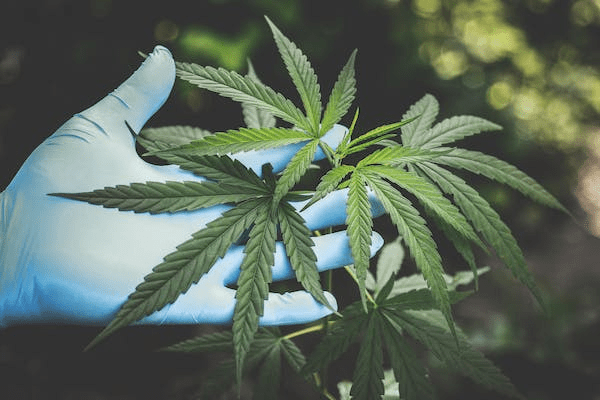By Dr. Akintoye O.A
Thank you for reading this post, don't forget to subscribe!Email: oluwayemijubilee@yahoo.co.uk
We write this to appreciate the Americans who have been reading this blog. Our Google Insights data shows that over 40 percent of our readers are from the US. Thanks

1. Introduction: The Complex Landscape of Drug Policies in the United States
Drug policies in the United States have long been a subject of intense debate and scrutiny. As the nation grapples with the rising demand for marijuana medication and battles against the devastating effects of opioid addiction, policymakers face a challenging dilemma. On one hand, there is a growing recognition of the potential benefits of marijuana for medicinal purposes, with an increasing number of states legalizing its use. On the other hand, the country is confronted with a worsening opioid epidemic that has claimed countless lives and strained communities. This article delves into the intricate balance between approving marijuana medication and combating the usage of opioids both domestically and overseas, exploring the complexities and implications of these parallel struggles. By examining the historical context, controversies, and international perspectives, we aim to shed light on the multifaceted nature of drug policies in the United States and the pressing need for effective solutions.
1. Introduction: The Complex Landscape of Drug Policies in the United States

Understanding the Historical Context
In order to grasp the complexity of drug policies in the United States, it’s crucial to delve into their historical context. Throughout American history, drug regulations have been influenced by a multitude of factors, including societal attitudes, political agendas, and public health concerns. This intricate web of influences has shaped the ever-evolving landscape of drug laws we see today.
The Evolution of Drug Laws in the US
The evolution of drug laws in the United States is a fascinating journey marked by shifting perspectives and changing priorities. From the early regulation of opium in the late 19th century to the era of prohibition and the subsequent “War on Drugs,” drug policies have taken various forms over the years. Understanding this historical progression provides valuable insight into the current state of drug legislation.
2. Exploring the Rise of Marijuana Medication: Benefits and Controversies
The Emergence of Medical Marijuana
In recent years, medical marijuana has emerged as a hot topic in the realm of drug policies. Advocates argue that marijuana has therapeutic properties that can alleviate symptoms for patients suffering from a range of conditions, including chronic pain, epilepsy, and nausea induced by chemotherapy. As a result, numerous states have legalized the use of medical marijuana, sparking a nationwide debate.

Medical Benefits and Efficacy
Research on the medical benefits of marijuana has shown promising results. Studies indicate that cannabinoids, the active compounds found in marijuana, possess pain-relieving and anti-inflammatory properties. Additionally, they may help manage symptoms associated with certain neurological disorders. Despite these findings, there is ongoing scientific exploration to fully understand the efficacy and potential risks of marijuana as a medication.
Controversies Surrounding Marijuana Medication
While medical marijuana has gained support from many quarters, it also faces its fair share of controversies. Critics raise concerns about the lack of standardized dosing, potential adverse effects, and the potential for misuse and abuse. Additionally, conflicting state and federal regulations create confusion and legal challenges, further complicating the landscape surrounding marijuana medication.
3. The United States’ Struggle with Legalizing Marijuana for Medicinal Purposes
The Patchwork of State Laws
One of the primary challenges in the United States’ approach to medical marijuana lies in the patchwork of state laws. While many states have approved its use, there is no consistent national policy. This leads to discrepancies in access and regulation, posing challenges for patients, healthcare providers, and law enforcement officials alike.
Federal Regulations and Challenges
At the federal level, marijuana remains classified as a Schedule I substance, meaning it is deemed to have a high potential for abuse and no accepted medical use. This classification creates a barrier for research, as it restricts funding and hinders the ability to conduct rigorous scientific studies on its potential benefits and risks. The conflict between federal and state laws further complicates the issue, leaving many stakeholders in a state of uncertainty.
The Role of Research and Science
Amidst the debates and legal ambiguities, the role of research and science cannot be overstated. Efforts to study the medical applications of marijuana are essential in order to provide evidence-based guidance for policymakers and healthcare professionals. By fostering a research-friendly environment and encouraging rigorous scientific inquiry, the United States can navigate the complexities of marijuana medication more effectively.
4. The Opioid Epidemic: Understanding the Impact on American Society

An Overview of the Opioid Crisis
The United States is currently grappling with an opioid epidemic that has devastating consequences for individuals, families, and communities. Opioids, including prescription painkillers and illicit substances like heroin, have led to a surge in addiction, overdose deaths, and societal upheaval. Understanding the magnitude of this crisis is crucial to address its impact and find effective solutions.
Health and Social Consequences
The health and social consequences of the opioid crisis are far-reaching. Addiction to opioids not only wreaks havoc on individuals’ physical and mental well-being but also strains healthcare systems and social support networks. Misuse of opioids has led to an increase in infectious diseases, strained relationships, and even criminal activity. The toll it takes on individuals, families, and communities cannot be overstated.
The Economic Burden
Beyond the human suffering, the opioid epidemic also poses a significant economic burden. Healthcare costs, lost productivity, criminal justice expenses, and the strain on social services amount to billions of dollars annually. Tackling this crisis requires not only a comprehensive and compassionate approach to treatment and prevention but also an understanding of its economic implications.
By exploring the complexities of marijuana medication and the challenges posed by the opioid epidemic, we can gain a better understanding of the dilemmas faced by the United States in approving marijuana medication while simultaneously combatting opium usage overseas.
5. The US Government’s Approach to Combating Opioid Usage Overseas

International Cooperation and Partnerships
The United States government recognizes the global nature of the opioid crisis and understands the importance of international cooperation in tackling the issue. By partnering with other countries, sharing information, and coordinating efforts, the US aims to address the supply and distribution of opioids across borders.
Supply Reduction Strategies
To combat opioid usage overseas, the US government employs various supply reduction strategies. These include targeting drug trafficking organizations, disrupting the illicit drug trade, and supporting law enforcement agencies in partner countries. By focusing on reducing the availability of opioids, the hope is to prevent their misuse and addiction.
Prevention and Treatment Initiatives
In addition to supply reduction, the US government also emphasizes prevention and treatment initiatives. This involves supporting programs that educate communities about the dangers of opioid use, promoting responsible prescribing practices, and expanding access to evidence-based treatments for addiction. By addressing the root causes and providing support for those struggling with opioid addiction, the US aims to reduce the demand for opioids both domestically and abroad.
6. The Ongoing Debate: Balancing Marijuana Medication and the Fight against Opioid Addiction

Exploring the Interplay between Marijuana and Opioid Use
The use of marijuana as a potential alternative to opioid medications has sparked a heated debate. Some argue that marijuana can serve as an effective pain management tool, potentially reducing the reliance on opioids. However, others express concerns about the potential for marijuana use to lead to further substance abuse issues.
Addressing Potential Benefits and Risks
While research on the topic is ongoing, it is important to consider both the potential benefits and risks of utilizing marijuana as a medication for pain management. By carefully weighing the evidence, policymakers can make informed decisions about how to balance patient needs with public health concerns.
Policy Considerations and Challenges
Developing policies that strike the right balance between providing access to marijuana medication and addressing the opioid epidemic presents its own set of challenges. Factors such as regulatory frameworks, dosing guidelines, and ensuring quality control standards are met all need careful consideration. It is essential to approach these issues with an open mind, utilizing scientific evidence and expertise.
7. International Perspectives: How Other Countries Tackle Similar Drug Policy Dilemmas
Comparative Analysis of Different Approaches
Looking beyond the United States, it is valuable to examine how other countries have approached similar drug policy dilemmas. There is a range of approaches, from strict prohibition to harm reduction strategies, and studying these diverse models can provide valuable insights.
Lessons Learned and Best Practices
By analyzing the experiences of other countries, policymakers can learn from both the successes and failures of different drug policy approaches. This knowledge can help shape evidence-based policies that are effective in addressing drug addiction and promoting public health.
Potential for Global Policy Collaboration
Drug addiction is a global issue that requires global collaboration. By fostering international cooperation and sharing best practices, countries can work together to develop more comprehensive and successful drug policies. Collaboration can lead to shared resources, increased research efforts, and a united front against the challenges posed by drug addiction.

8. Conclusion: Navigating the Complexities of Drug Policies for a Healthier Future
Striking a Balance between Patient Access and Public Health
Finding the right balance between patient access to necessary medications and safeguarding public health is a complex task. It requires careful consideration of individual needs, potential risks, and broader societal impacts. Striving for this balance can help ensure the well-being of both patients and the community.
The Need for Evidence-Based Decision Making
When it comes to drug policies, decisions should be based on reliable scientific evidence. This means supporting research efforts, keeping an open mind to new findings, and continuously evaluating the effectiveness of existing policies. Evidence-based decision making is crucial in addressing the challenges posed by drug addiction.
Looking Ahead: Opportunities and Challenges in Drug Policy Reform
The dynamic nature of drug addiction and its associated policies necessitates ongoing adaptation and reform. As new substances emerge and trends shift, policymakers must remain vigilant and proactive. Opportunities for reform, such as exploring alternative pain management methods and strengthening prevention efforts, must be balanced with the challenges of implementation and potential unintended consequences.
In navigating the complexities of drug policies, a commitment to public health and the well-being of individuals is paramount. By combining compassion, scientific evidence, and a willingness to collaborate, we can work towards a healthier future for all.
8. Conclusion: Navigating the Complexities of Drug Policies for a Healthier Future
In conclusion, the United States finds itself at a critical juncture in its approach to drug policies. Balancing the approval of marijuana medication and the fight against opioid addiction requires a delicate equilibrium between patient access to alternative treatments and protecting public health. As the nation grapples with these challenges, evidence-based decision making, international collaboration, and a comprehensive understanding of the complexities involved will be crucial. By forging a path that incorporates lessons learned from other countries and prioritizes the well-being of individuals and communities, the United States can navigate these complexities to create a healthier future. It is through informed and proactive policy reforms that we can truly address the dilemma at hand and pave the way for a more effective and sustainable drug policy framework.
FAQ
1. Is marijuana medication legal throughout the United States?
Answer:
No, the legality of marijuana medication varies across different states in the United States. While some states have legalized its use for medicinal purposes, others maintain stricter regulations or have not legalized it at all. It is essential to consult state-specific laws and regulations to understand the legal status of marijuana medication in a particular region.
2. How does the opioid epidemic in the United States relate to the approval of marijuana medication?

Answer:
The opioid epidemic and the approval of marijuana medication are interconnected in the context of drug policies. While marijuana has been proposed as an alternative treatment for certain medical conditions, the opioid epidemic highlights the devastating effects of opioid addiction. Policymakers face the challenge of striking a balance between providing access to marijuana medication and implementing measures to combat the opioid crisis effectively.
3. What role does international collaboration play in addressing drug policy dilemmas?
Answer:
International collaboration plays a significant role in addressing drug policy dilemmas. By learning from the experiences and best practices of other countries, the United States can gain valuable insights into effective strategies for drug regulation, prevention, and treatment. Collaborative efforts foster knowledge-sharing and the development of global policies that can better address the complexities of drug use and mitigate its negative consequences.
4. How can evidence-based decision making contribute to more effective drug policies?
Answer:
Evidence-based decision-making is essential in developing more effective drug policies. By relying on scientific research, data, and expert analysis, policymakers can make informed choices that prioritize public health and safety. Evidence-based approaches help understand the potential benefits and risks associated with various drug policies, allowing for the implementation of measures that are more likely to yield positive outcomes and address the challenges posed by drug use and addiction.



